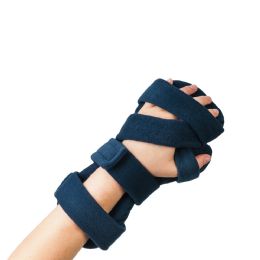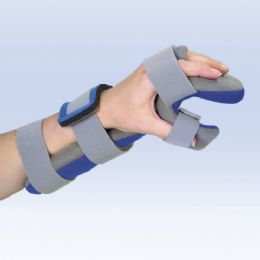
Hand and Finger splints come in a varied assortment of configurations and sizes to accomplish many different functions for support and immobilization. Athletic trainers, occupational therapists, physical therapists, orthopedic doctors and emergency room and ambulance professional personnel often require specific hand or finger splints to help their patients recover or rehab from injuries, or to assist in deformities or spasticity caused by certain health conditions.



~1.jpg&newheight=260&quality=80)








What are Finger Splints and How are They Used?
Finger splints, which are also known as trigger finger splints or mallet finger splints, are created in several varied configurations to help in many different applications. Tendons in every finger control the motion for that finger, with each tendon passing through a small sheath that connects it to the forearm muscles. If these tendons become inflamed they can form nodules, which makes it difficult for the tendon to get through the sheath, resulting in pain when the finger is flexed. Referred to as “Trigger Finger”, this condition is typically characterized by one or more “locking” fingers with uncomfortable and difficult motion.
Another condition that finger splints are typically used for is called “Mallet Finger”, also known as jamming your finger. Often associated with sports, mallet finger occurs when a tendon in the outermost joint of a finger is torn, which causes the finger tip to droop.
Finger splints can help both of these common conditions along with numerous other finger issues. For example, our Stax Finger Splints are specifically designed to support the distal joint of the finger while in extension, and facilitate unrestricted movement of the proximal interphalangeal joint. Our DeRoyal LMB Spring Finger Extension Assist versatile finger splint extends the PIP joint with a slight extension effect for the MP joint, providing great comfort with its attention on the distal pad curvature.
What are Hand Splints and How are They Used?
Used to support the wrist and hand joints, hand splints facilitate healing by keeping the hands from contracting, preventing deformities from developing. Resting hand splints are indicated for use while resting, or for when you are not actively using your hands, while dynamic hand splints utilize a moving force compartment that basically remains constant as the part moves, indicated for use when your hands are in action, or when inflammation is under control.
Resting hand splints help to support the joints of the hand, and can help alleviate pain during times of joint discomfort or arthritis. For example, our DeRoyal LMB Air-Soft Resting Hand Splint offers a fully functional, resting position for the fingers, thumb and wrist in a malleable aluminum frame, allowing for static progressive splinting along with a self-wicking liner that helps keep moisture away from the skin.
Dynamic hand splints, which are also sometimes referred to as hand braces, employ the use of carefully placed outriggers that serve as fulcrums for the moving splint. Traction is realized by the pull of bands and slings, providing a direction of force with the outrigger. Dynamic hand splints are generally indicated when inflammation is under control, or for gaining passive range-of-motion (ROM) assistance. They prolong stretching and provide resistance, while a dorsally placed outrigger can even serve as a substitute for missing or weak finger extensors for radial nerve palsy patients.
Rehabmart offers a multitude of superior quality hand and finger splints from highly reputable manufacturers which include Comfy Splints, BSN Medical, DeRoyal, Restorative Care of America, North Coast and Sammons Preston.
Mike Price, OT
Rehabmart Co-Founder & CTO